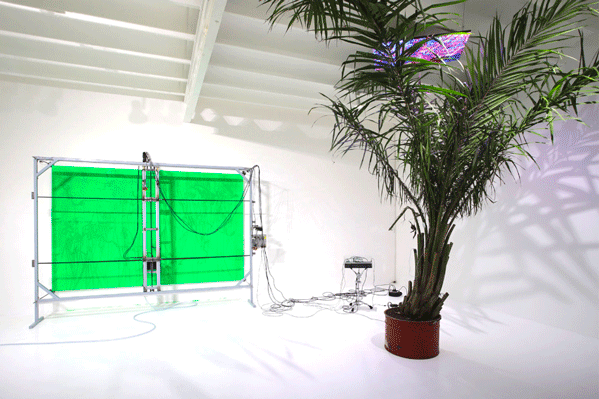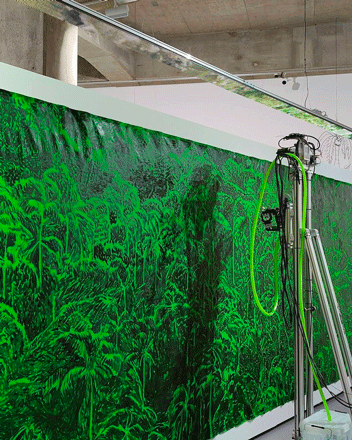In a time when devastating climate events are a recurrent phenomenon, when countries are pressing harder to change policies and individual habits, there are still some entities who seldom acknowledge the amalgam of individual opinions and conflicting interpretations that must be addressed – a tendency that is particularly disconcerting when the state of the ecosystem hangs by a thread.
Just a month after the U.N. Climate Change Conference, many of the concrete legislations agreed upon by some nations have already proven to be unbalanced and misleading. While the reports name deforestation as one of the biggest causes of climate change and Indonesia as one of three countries with the highest rates of forest loss, the Indonesian government’s elusion of the agreed upon actions leaves the climate pact in an alarming limbo. What is to stop other nations from breaking the already flimsy action planes?
In the fragile atmosphere of the summit, Indonesia pledged to reach carbon neutrality by the year 2030, which means reducing deforestation and the greenhouse emissions created by its transport sector. Although a singular difficulty arises. Indonesia did not actually commit to end deforestation.
Rather, to reduce its greenhouse emissions it will use more biodiesel — composed of plant material and animal waste — to power vehicles and produce heat and electricity. The government believes that replacing fossil fuels with biodiesel could reduce emissions by 36 million tons of CO2 by 2040, whereas the production of biodiesel will have to increase by nearly 50% over the next three years.

Based on these considerations, biodiesel is a more sustainable alternative to fossil fuels as it can be replenished quicker and releases fewer greenhouse gases. However, the conundrum lies in the fact that biodiesel production at this volume can cause immense damage to the land, using as much land as palm oil cultivations, thus causing overlapping deforestation. How do the authorities respond to these allegations? The environmental minister states the promise was "clearly inappropriate and unfair".
In the light of these criticisms, there is an artist who brings a different perspective to this matter. Kei Imazu, a Japanese-born artist, created a time-based project called Artificial green by natural green in which a brush dripped in water is manipulated by a palm oil tree organic current. The project inhabits both the conceptual realm, where the mechanical brush erases the already made presence of plants on the canvas, and the metaphorical realm where the solid object brings attention to the undeniable corrosive phenomenon of deforestation.
“The rainforests of Sumatra, Lalimantan and Papua in Indonesia, which contribute to the earth’s ecosystem, are being massively destroyed to be replaced by oil palm plantations, threatening the survival of thousands of organisms, causing land erosion and flooding” Imazu says.
“This installation was an attempt to present the phenomena related to global climate change.”
Known for her combination of conventional and digital methods, Kei Imazu collaborated with the researcher Bagus Pandega, creating a multitude of data describing how forests in Sumatra and Lalimantan represent 80 % of the global deforestation regions out of 11 areas. Deforestation effects can rupture across different spheres, such as reducing water quality, causing erosion and floods, threatening countless species and humans who live off the land, and destabilizing the global climate.
Imazu and Pandega’s installation is a remarkable construction, equipped with a paintbrush whose movements are triggered by the palm tree presented in the exhibition room. It contains a modular electronic device that reads the organic electric current in the plant. Their ecological concerns are put into practice, addressing the United Nations Sustainable Development Goal for Life on Land and Climate Action.
The social and environmental advocacy of Kei Imazu does not reside in a single piece. In 2013, she held her exhibition “Puzzle” at Yamamoto Gendai, a contemporary art gallery in Tokyo. Promising imaginary and relentlessly innovative technique, Imazu created a series of paintings that used old masterpieces as the primary layer, covering them with the motifs from photographs taken by artists after the 2011 disaster in Tōhoku.
"This piece is actually a collage using photos from the earthquake and tsunami of March 2011. My father has a factory in the region, in Ishinomaki City (where the tsunami hit hard),” the artist explains, “so I went up there to take some pictures. I combined images from a Japanese catastrophe with Delacroix’s painting."

The paintings are both unsettling and compelling, giving the viewer the possibility of entering the individual artist's world in correlation with social consciousness. The artist's relentless search for her own individuality in conjunction with collaborations and the social realm creates an intriguing project that elaborates and simplifies the recurrent climate struggles Indonesia is facing.
Nevertheless, it is also our responsibility as a social unit to demand that the Indonesian government uphold its promises, preventing the devastating rash of uninhabitable deforested land. To do so, raising awareness to this issue on social media and other platforms can push the movement forward.
See more of Kei Imazu's work here.
